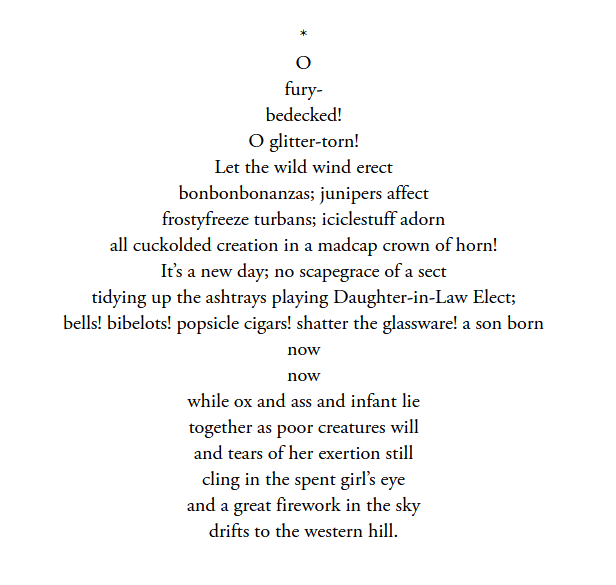Do you want to write poetry?
Do you like art and shapes? Do you want to cry at the thought of actually writing out lines and stanzas of words? If so, concrete poetry is just the right fit for you!*
*Terms and conditions may apply
What Is Concrete Poetry?
Concrete poetry is a form of poetry that emphasizes the shape and typography of the poem, sometimes more than the words . The term concrete poetry originated in the 1950s from European artists Max Bill and Öyving Fahlström, and it was first described in “Pilot Plan for Concrete Poetry” by the Brazilian avant-garde poetry group Noigandres.
However, the form of poetry predates the term. The earliest examples of concrete poetry are by Simmias of Rhodes from as early as before 300 BCE, with poems arranged in the shape of wings, an egg, and a hatchet (“Wings”, “Egg,” and “Hatchet”).
Another early example of concrete poetry is Gerechtigkeitsspirale, a poem carved in the church of St. Valentin in the shape of a spiral.
Simmias of Rhodes, “Wings”, 1640 reprint
Erhart Falckener, Gerechtigkeitsspirale (“spiral of justice”)
How Do You Write Concrete Poetry?
To be clear, there are many, many different ways to write a concrete poem. Some are more similar to traditional poems, just arranged more deliberately. Others place more emphasis on the art aspect of the poem, blurring the lines between language and art to best express themselves.
The general, use-this-as-a-starting-point steps of writing a concrete poem are:
Decide on the shape/form of the poem
The poem can take the form of anything: for example, animals are a common theme, or everyday objects like a skyscraper or a cup of tea.
Sketch an outline
Using a pencil/pen and paper would probably be the easiest. This part is pretty self-explanatory — sketch the general shape of the object you’ve decided on that you’ll shape your poem around.
Write the poem
This part holds probably the most ambiguity. You could write a regular poem relating to your shape, or you could choose certain words or letters to repeat.
Fill in the shape
This part…also holds much ambiguity. You could fill in the shape line by line, so that the poem ends up like regular lines of text with line breaks to form the shape. Another way is to rotate the text, such as in a spiral.
Alternatively, you could use the words themselves to create the lines of the “picture” instead of filling it in. Again, there are no set rules or steps of how to create a concrete poem — the most important aspect of concrete poetry is expressing an idea in using both visual and verbal aspects.
Lewis Carroll, “The Mouse’s Tale”
George Starbuck, “Sonnet in the Shape of a Potted Christmas Tree”
Ian Hamilton Finlay, Cork/Net
Web Page Design by JOYCE MA







